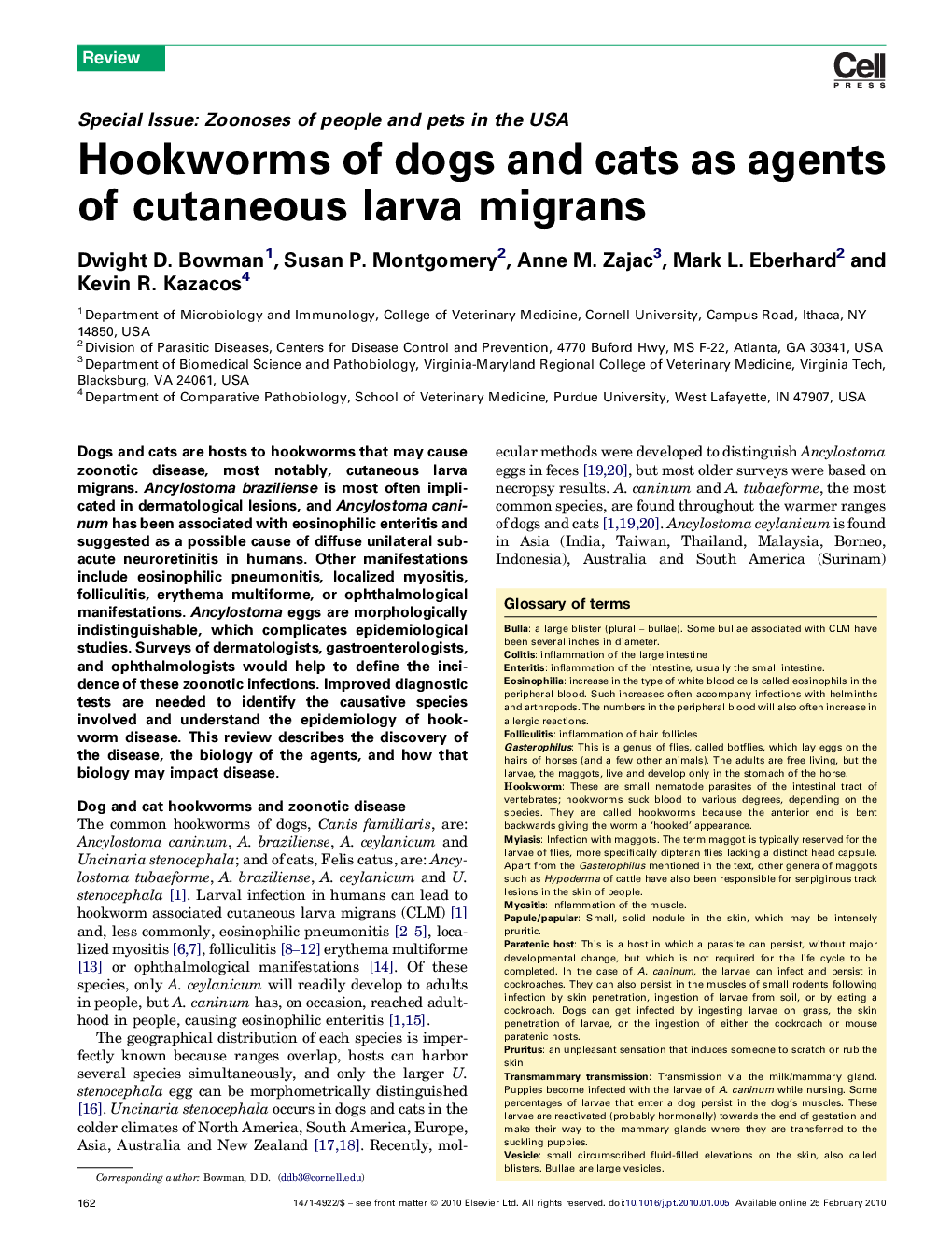| Article ID | Journal | Published Year | Pages | File Type |
|---|---|---|---|---|
| 3423272 | Trends in Parasitology | 2010 | 6 Pages |
Dogs and cats are hosts to hookworms that may cause zoonotic disease, most notably, cutaneous larva migrans. Ancylostoma braziliense is most often implicated in dermatological lesions, and Ancylostoma caninum has been associated with eosinophilic enteritis and suggested as a possible cause of diffuse unilateral subacute neuroretinitis in humans. Other manifestations include eosinophilic pneumonitis, localized myositis, folliculitis, erythema multiforme, or ophthalmological manifestations. Ancylostoma eggs are morphologically indistinguishable, which complicates epidemiological studies. Surveys of dermatologists, gastroenterologists, and ophthalmologists would help to define the incidence of these zoonotic infections. Improved diagnostic tests are needed to identify the causative species involved and understand the epidemiology of hookworm disease. This review describes the discovery of the disease, the biology of the agents, and how that biology may impact disease.
